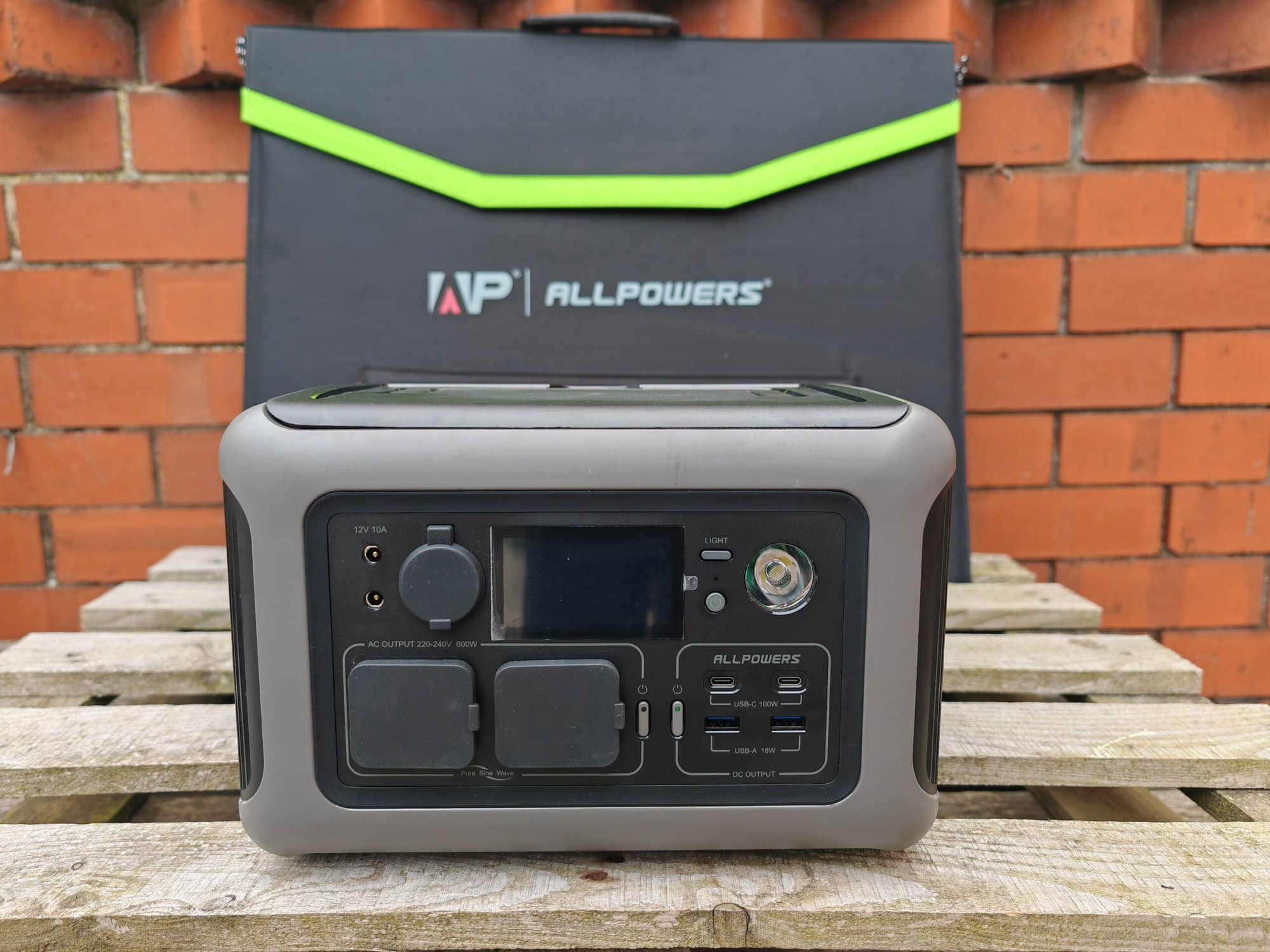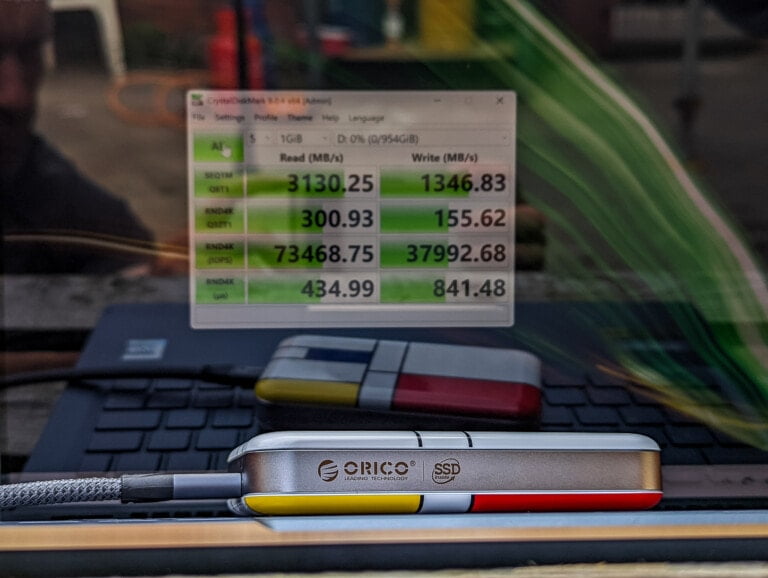Any links to online stores should be assumed to be affiliates. The company or PR agency provides all or most review samples. They have no control over my content, and I provide my honest opinion.
As much as I love a big portable power station, having a smaller-capacity power station is incredibly convenient due to its physical size and weight.
I previously reviewed the Allpower S300 and thought it was superb. At just 3.6kg, it is easy to take with you wherever you go, I regularly take it in my car with me, and it was one of the cheapest options on the market.
Allpowers recently launched the R600 portable power station, which only costs a little bit more than the S300 but is superior in many ways.
| Preview | Product | Rating | Price | |
|---|---|---|---|---|

| ALLPOWERS Portable Power Station R600, 299Wh LiFeP04 Battery... | £249.99 | Buy on Amazon |
Specification
- 299Wh Capacity LiFePO4 battery with 6,000 cycles to 50% capacity, 3,500 cycles to 80% capacity
- 2 x AC 230V 2.6A 600W Pure Sine Wave(Surged 1200W)
- USB:
- USB-C*2: 5/9/15V 3A, 20V 5A, 200W Max (100W each)
- USB-A*2: 5V 3A, 9V 2A, 12V 1.5A, 36W Max.
- Car Port – 2xDC5525
- 15W Wireless Charger
- 400W max. Fast Charging in 1 Hour
- 300W max Solar Input with XT60 Connector
- 5 Ways to Charge (AC/Solar/Auto/Generator/AC+Solar/AC)
- 10ms Uninterruptible Power Supply (UPS)
- Powers 10 Essential Devices Simultaneously
- Intelligent Control and Monitoring via the ALLPOWERS App
- 5.4kg net weight
- Dimensions – 285 x 195 x 190 mm
Allpowers R600 vs S300 Key Differences
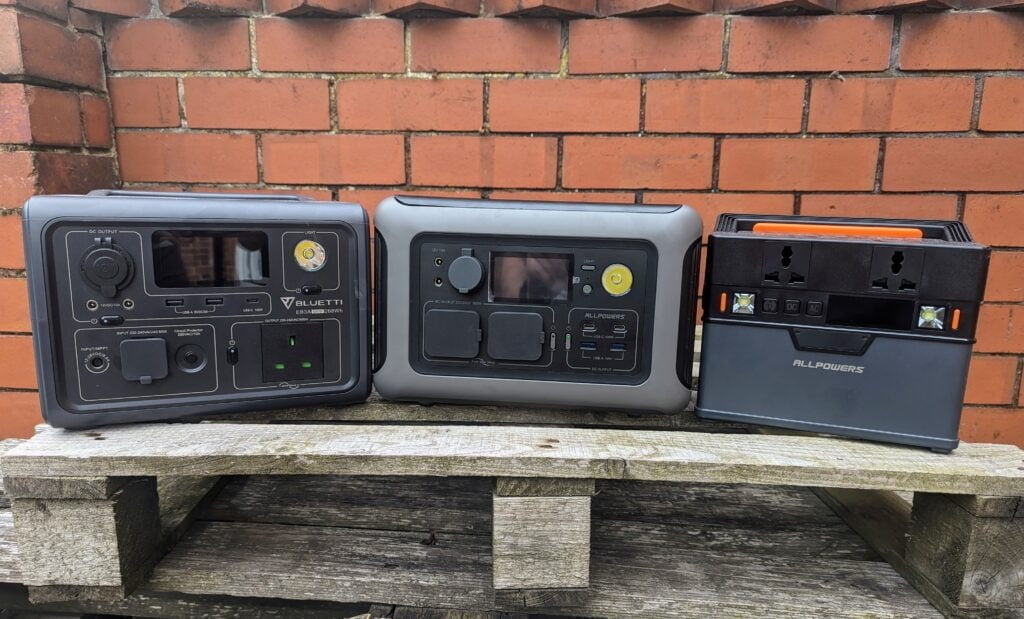

At the time of writing, there is just a £50 price difference between these power stations.
The new R600 looks more attractive with its rounded edges and has some significant improvements:
- Built-in power supply means you just need a kettle lead to charge it
- Twice the power output with 600W vs 300W and 1200W vs 500W surge
- Upgraded to LiFePO4, giving you fivefold the battery endurance before it hits 80% with 3500 vs 500 cycles.
- Upgraded the USB to include 2x 100W USB-C
- Upgraded solar allowing up to 300W from 100W
- Much faster AC charging – takes just one hour vs 5-6 hours
Design and Port Configuration
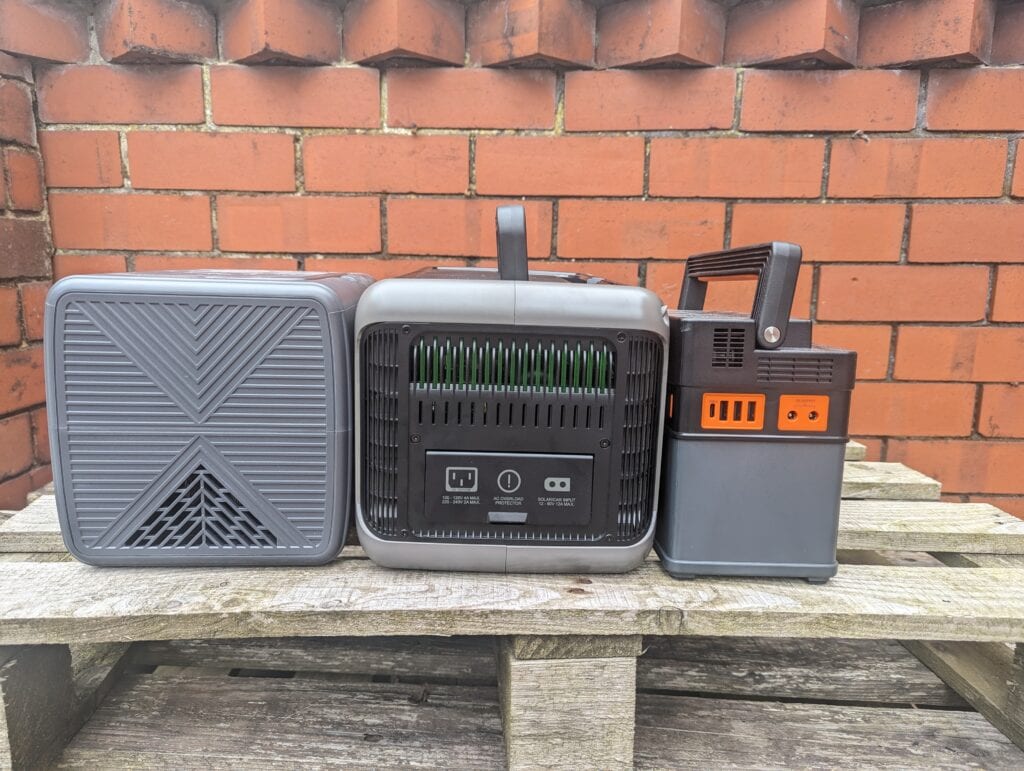

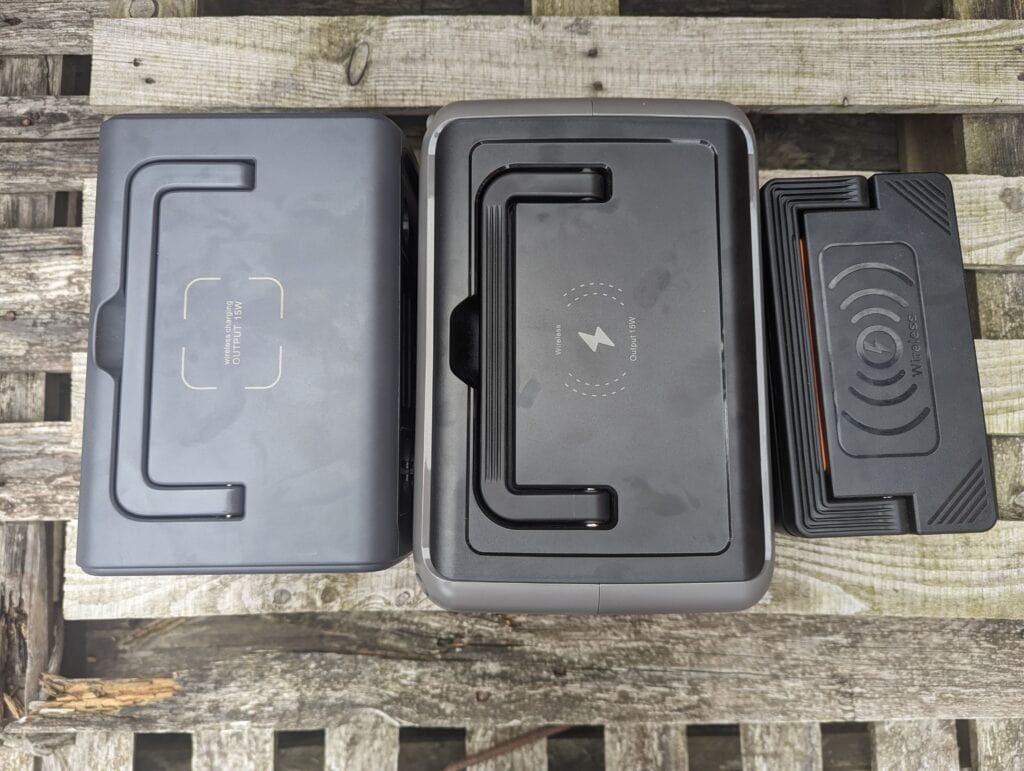

The power station looks more premium than the very angular Allpowers S300 I have previously reviewed. Physically it is quite a bit bigger and heavier than the S300, but this is because the R600 has a built-in charger, and I believe LiFePO4 batteries are also larger than NMC.
The design is not dissimilar to the Bluetti EB3A, but it does have many advantages of the Bluetti, including two AC sockets, 2x 100W USB-C ports, faster AC charging and faster solar that uses a XT60 connector rather than DC.
All the output ports are located on the front of the power station, including a handy display to give you some information about the charge/discharge etc.
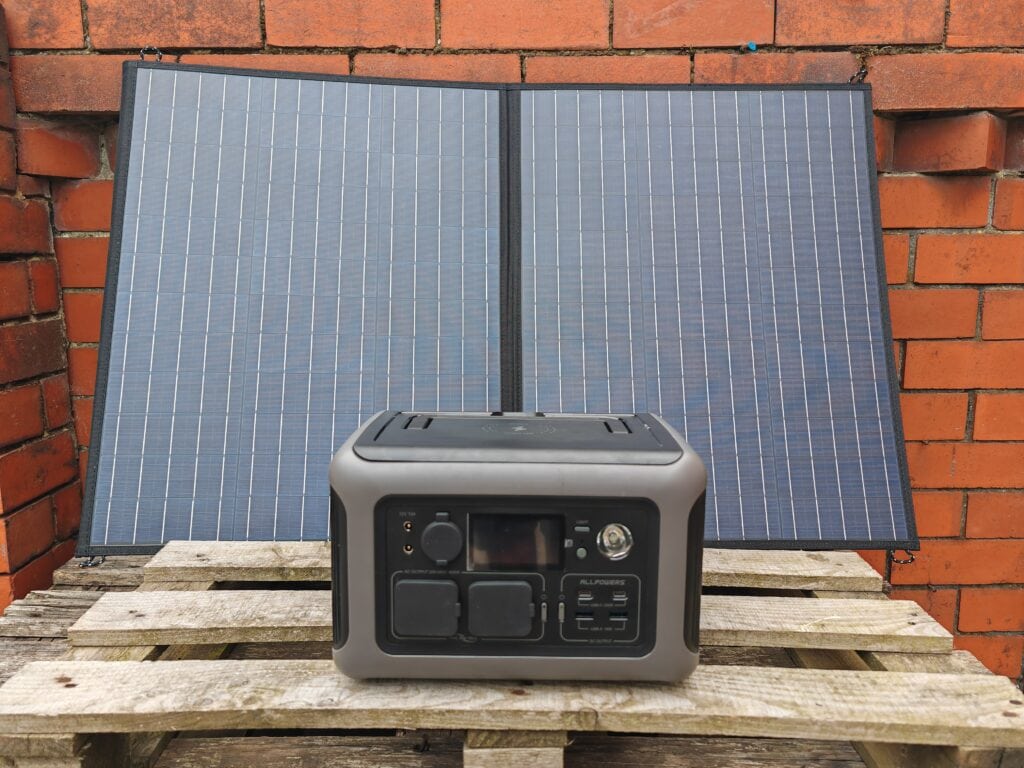

As well as the 2x AC sockets and USB ports, you have a couple of DC barrel outputs and a 12V car socket.
On the right side of the power station is a flap concealing the mains input and XT60 solar input, plus a circuit breaker button.
On the top of the power station is a convenient wireless charging pad. I think it’s just Allpowers and Bluetti that use these. It is not something I use a lot at home, but it would be convenient when sitting around camping.
Allpower App
You can pair the R600 power station with the Allpower app. This power station only works via Bluetooth, but Allpowers does have some models that are WiFi equipped.
The app is basic but functional.
You can see the input/output of the device, and it will let you know the remaining time for a charge/discharge.
You can also remoted toggle the AC/DC outputs or switch on the LED light.
Within the settings, you have a couple of useful features. You can enable the Eco mode, or you can change the working mode. Within this, you can have it in standard, fast or mute mode.
Solar Charging
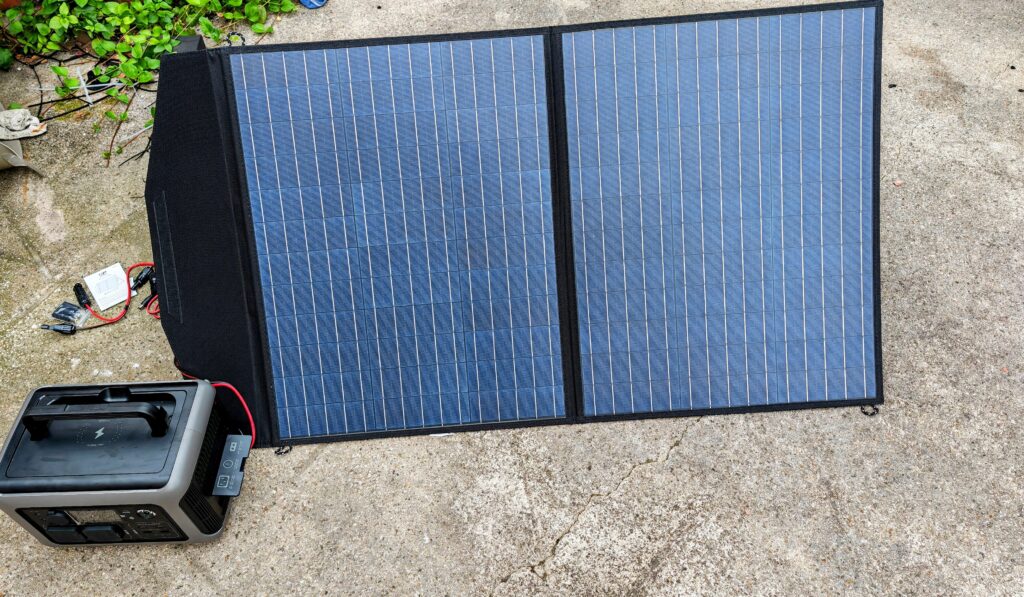

This has an XT60 connector for the solar input, making it easy to connect third-party solar panels or one of the Allpowers solar panels.
Allpowers has a good range of foldable solar panels, including 60W, 100W, 140W, 200W, 400W and 600W, and they have options for using either monocrystalline (mono) or polycrystalline (poly). The monocrystalline options should be superior as they are more efficient with a longer lifespan, but for these portable solar panels, you will probably not notice any difference.
It supports fast solar charging, allowing you to recharge the power station in as little as 1.5 hours with a 300W solar input. Allpowers sent me one of the 100W panels to test it with, but during my testing period, the weather was quite overcast. I managed to get a peak of 50W on one semi-sunny day.
With this using an XT60 connection, it should be easy enough to wire up multiple panels in parallel for a faster charge. I also have an EcoFlow 220W bifacial panel, so when it is sunnier, I will see how quickly I can charge this.
AC Charging / Fan Noise
In the standard mode, the power station took a charge of 310W from the wall and changing this to fast charging mode, it increased to 410W. At full speed, the R600 can be fully recharged from 0 to 100% in just 1 hour.
When I had it in standard mode, after about 20 mins of charging, the fans hadn’t didn’t kick in properly, there was just a light hum from the unit.
In the fast mode, it lasted a few minutes before the fans kicked in properly. These fans are quite loud, and the noise is intrusive, in my opinion. It doesn’t have the nicest sound profile.
Switching it to the mute working mode, the charge speed dropped down to 100W, the fans appeared to stop, and the noise from the power station was almost silent. Putting my ear next to it, I could hear a light hum.
Even in the mute mode, the fans can kick in, which is likely a safety feature. After about 30mins of charging, I heard them kick in for about 20 seconds or so, then dial back down. The one consideration here is that I am personally a light sleeper, and I wouldn’t appreciate the fans kicking in if I was sleeping with this in the same room (or, more likely, a caravan/camper etc.).
Performance / In Use


As a simple test, I ran my PC off the power station to test the full capacity with a TP-Link Tapo smart plug, monitoring the usage. The end result showed 0.25kWh giving around 84% efficiency for devices plugged in via a socket.
With 600W of output, this is a lot better than other small-capacity power stations, and it gives you quite a bit of flexibility in what you can use. The main issue you will have is any high-power devices will drain the battery very fast.
USB Ports & Wireless Charging
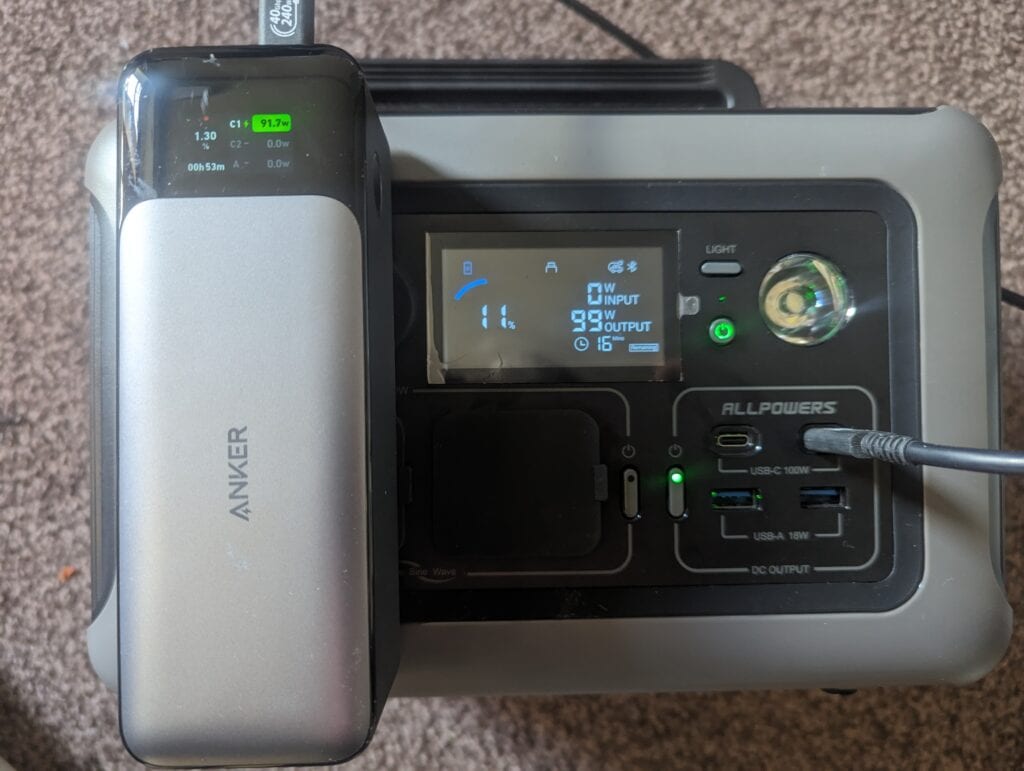

The power station is equipped with two USB-C ports which are rated for 100W each, and then two additional USB-A ports, rated for 18W each.
Charging my Anker 737 Power Bank, both USB ports showed just under 100W. With the power bank drained, and the power station fully changed, it gave the Anker a full charge leaving 69% remaining in the power station. That works out as the Anker using 92.69Wh with the actual capacity of the power bank being 86.4Wh. If those numbers are currect, that’s a 93.21% efficiency.
Plugging in the Anker and the Zhiyun Molus X100 100W cob light, I was able to achieve 200W? across both ports
I like the inclusion of wireless charging, it is something only Allpowers and Bluetti seem to do, and it just seems like a convenient thing to have if you are sitting around a campsite.
Price and Alternative Options
| Preview | Product | Rating | Price | |
|---|---|---|---|---|
   | ALLPOWERS Portable Power Station R600, 299Wh LiFeP04 Battery... | £249.99 | Buy on Amazon |
The Allpower R600 has an RRP of £349.99, and at the time of writing, it was listed on Amazon for £297.49 with an additional £50 off available, so around £250
When buying directly from Allpowers, they have it listed as £349.99 with 15% off at checkout.
Pricing is extremely aggressive when you look at competing options
- Bluetti EB30 is about £350
- Jackery Explorer 240 is about £260
- Anker 521 is about £300
- Ecoflow River 2 is about £270
Overall
The Allpowers R600 is a superb little power station, and I think it is a big upgrade from the already excellent S300 I have previously reviewed.
It is perhaps not as refined as some of the other brands, the fan noise was quite loud and eager to kick, I’d say Jackery and Ecoflow are better in this regard. The app is functional but not as good as Ecoflow.
As always with Allpowers, pricing is extremely aggressive, and if you want the best bang for your buck and a LiFePO4 based power station with the capacity, I think you will find it hard to find a better option.
ALLPOWERS R600 Portable Power Station Review Rating
Summary
The Allpowers R600 is a superb little power station, and I think it is a big upgrade from the already excellent S300 I have previously reviewed. As always with Allpowers, pricing is extremely aggressive, and if you want the best bang for your buck and a LiFePO4 based power station with the capacity, I think you will find it hard to find a better option.
Overall
90%-
Overall - 90%90%
Pros
- 299Wh LiFePO4 battery for £250-ish
- High power output
- Fast charging both via mains and solar
- 2x100W USB-C
Cons
- Fan noise
I am James, a UK-based tech enthusiast and the Editor and Owner of Mighty Gadget, which I’ve proudly run since 2007. Passionate about all things technology, my expertise spans from computers and networking to mobile, wearables, and smart home devices.
As a fitness fanatic who loves running and cycling, I also have a keen interest in fitness-related technology, and I take every opportunity to cover this niche on my blog. My diverse interests allow me to bring a unique perspective to tech blogging, merging lifestyle, fitness, and the latest tech trends.
In my academic pursuits, I earned a BSc in Information Systems Design from UCLAN, before advancing my learning with a Master’s Degree in Computing. This advanced study also included Cisco CCNA accreditation, further demonstrating my commitment to understanding and staying ahead of the technology curve.
I’m proud to share that Vuelio has consistently ranked Mighty Gadget as one of the top technology blogs in the UK. With my dedication to technology and drive to share my insights, I aim to continue providing my readers with engaging and informative content.
Last update on 2024-04-28 / Affiliate links / Images from Amazon Product Advertising API

